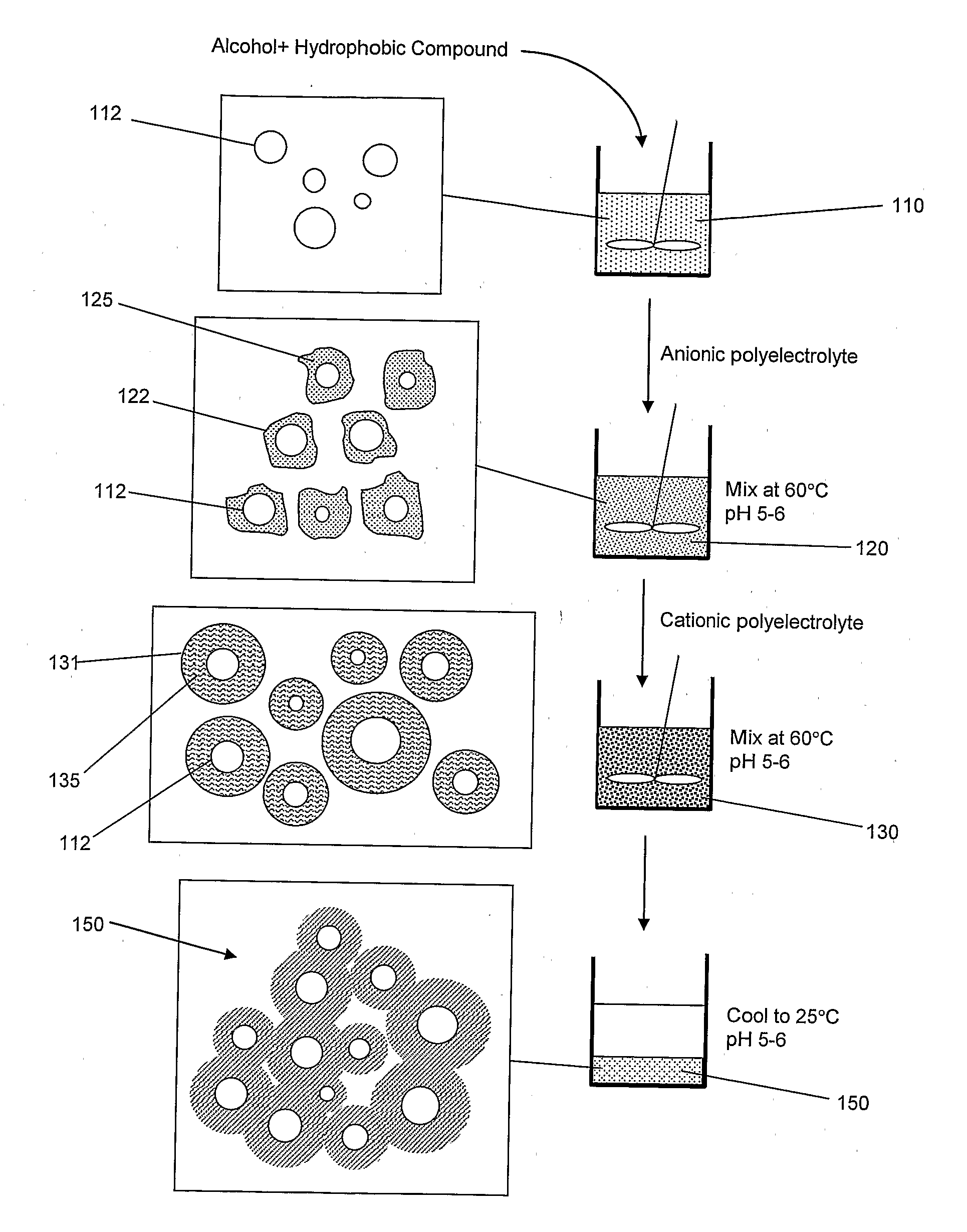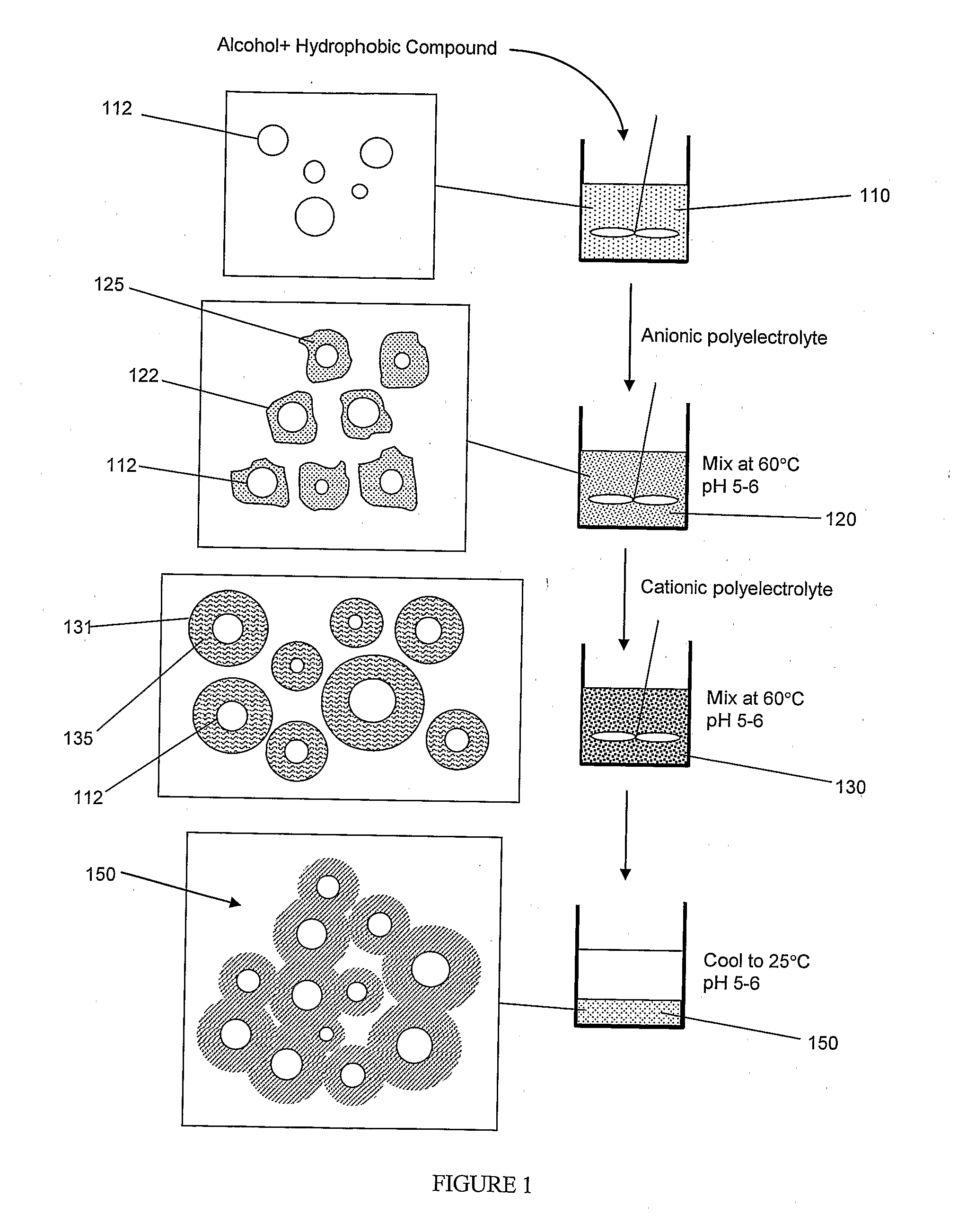Method for Nanoencapsulation
- Summary
- Abstract
- Description
- Claims
- Application Information
AI Technical Summary
Benefits of technology
Problems solved by technology
Method used
Image
Examples
example 1
Paste Preparation of Lutein-Ester Capsules
[0041]Lutein is one of the six hundred known naturally existing carotenoids. It can be extracted from marigold flower in the form of lutein-ester (C72H116O4, MW 1045.71). Upon uptake by the body, lutein-ester gets converted to free lutein that is then transferred to the macula lutea of the retina where it densely accumulates. Because of the marked antioxidant activity of lutein, it can prevent light-initiated oxidative damage to the retina and therefore, can prevent Age-related Macular Degeneration (AMD) [Granado F., “Nutritional and Clinical Relevance of Lutein in Human Health,” British J. Nutr., vol. 90, pp 487-502, 2003]. Lutein is part of the human diet when green leafy vegetables are consumed. However, the natural amounts of lutein tend to decline in the body with age. Thus, fortification of lutein as a dietary supplement could restore the natural balance of processing for many applications in both food and pharmaceutical industries. In...
example 2
Suspension Preparation Using Lutein Capsular Matrix
[0044]A suspension of lutein-ester nano-and meso-capsules was prepared by heating 1 g of lutein capsular matrix produced according to example 1 in 10 ml deionized water at 40° C. FIG. 3 shows a scanning electron micrograph of lutein nano-and meso-capsules after dissolving the lutein capsular matrix. This figure shows that the resultant capsules have a size in the 90-1000 nm range. In addition to the nano-and meso-capsules, there may be particles that contain little to no lutein. Any un-encapsulated lutein-ester was extracted from the capsules suspension by adding chloroform to the suspension. Chloroform readily dissolves lutein-ester and is not miscible with water. FIG. 4 illustrates a UV-Vis absorption spectrum of lutein-ester capsules / water suspension verifying the presence of lutein-ester in the capsules. Lutein-ester dissolved in chloroform exhibited the UV-Vis spectrum shown in FIG. 4 inset.
example 3
Lutein-Ester Capsular Matrix Preparation with the Order of Adding Gum Arabic and Gelatin Polyelectrolytes Reversed
[0045]In this example, a lutein-ester capsular matrix was produced in the same manner as in example 1, except that gelatin A solution was added first to the lutein / ethanol mixture and rigorously stirred for 5-min at 60° C. The gum arabic solution was then added to the lutein-gelatin mixture and the entire mixture was left to stir for 5-min at 60° C. The resulting orange solution was then left to cool at room temperature. The resultant lutein-ester capsular matrix resembled the one produced according to example 1.
PUM
| Property | Measurement | Unit |
|---|---|---|
| Temperature | aaaaa | aaaaa |
| Temperature | aaaaa | aaaaa |
| Temperature | aaaaa | aaaaa |
Abstract
Description
Claims
Application Information
 Login to View More
Login to View More - R&D
- Intellectual Property
- Life Sciences
- Materials
- Tech Scout
- Unparalleled Data Quality
- Higher Quality Content
- 60% Fewer Hallucinations
Browse by: Latest US Patents, China's latest patents, Technical Efficacy Thesaurus, Application Domain, Technology Topic, Popular Technical Reports.
© 2025 PatSnap. All rights reserved.Legal|Privacy policy|Modern Slavery Act Transparency Statement|Sitemap|About US| Contact US: help@patsnap.com



